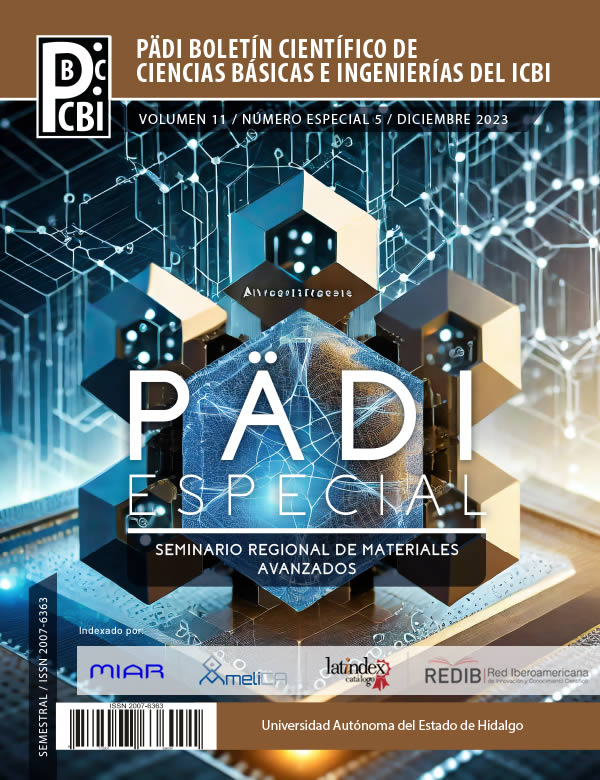Microencapsulation of caledula essential oil for skin anti-aging
DOI:
https://doi.org/10.29057/icbi.v11iEspecial5.11772Keywords:
essential oil, calendula, maceration, microemulsionAbstract
Oxidative stress is caused by various factors that lead to the appearance of signs of skin aging. Calendula is a plant that
contains molecules with antioxidant activity in its structure, which leads to the neutralization of free radicals from oxidative
stress. The present study aimed to extract the essential oils from this plant using the maceration method to create an O/W
emulsion through the ultrasonication method at a power of 250 W. In order to promote interaction between the aqueous and
oily phases, Tween 80 was incorporated as a non-ionic surfactant. Sodium alginate was also used as a stabilizing agent. Finally,
the presence of functional groups was confirmed through FTIR characterization, and the formation of the microemulsion was
observed through optical microscopy. Thus, microemulsification is proposed as an alternative for the transport of bioactive
substances from medicinal plants.
Downloads
Publication Facts
Reviewer profiles N/A
Author statements
Indexed in
- Academic society
- N/A
References
Abu-Thabit, N. (Ed.). (2021). Nano- and Microencapsulation - Techniques and Applications. IntechOpen. https://doi.org/10.5772/intechopen.88590
Arraiza, M. P., González Coloma, A., Burillo, J., & Calderón Guerrero, C. (2017). Medicinal and Aromatic Plants: The Basics of Industrial Application. Madrid: Bentham eBooks imprint.
Ayaz, M., Sadiq, A., Junaid, M., Ullah, F., Subhan, F., y Ahmed, J. (2017). Neuroprotective and Anti-Aging Potentials of Essential Oils from Aromatic and Medicinal Plants. Frontiers in Aging Neuroscience, 9. https://doi.org/10.3389/fnagi.2017.00168
Bolouri, P., Salami, R., Kouhi, S., Kordi, M., Asgari Lajayer, B., Hadian, J., & Astatkie, T. (2022). Applications of essential oils and plant extracts in different industries. Molecules, 27(24), 8999. https://doi.org/10.3390/molecules27248999
Branco, I. G., Sen, K., & Rinaldi, C. (2020). Effect of sodium alginate and different types of oil on the physical properties of ultrasound-assisted nanoemulsions. Chemical Engineering and Processing - Process Intensification, 153, 107942. https://doi.org/10.1016/j.cep.2020.107942
Cheng, M., Zeng, G., Huang, D., Yang, C., Lai, C., Zhang, C., y Liu, Y. (2017). Advantages and challenges of Tween 80 surfactant-enhanced technologies for the remediation of soils contaminated with hydrophobic organic compounds. Chemical Engineering Journal, 314, 98-113. https://doi.org/10.1016/j.cej.2016.12.135
Fenaroli, G. (1995). Fenaroli’s Handbook of Flavor Ingredients. Washington D.C, Estados Unidos de América: CRC Press.
Gupta, A., Eral, H. B., Hatton, T. A., y Doyle, P. S. (2016). Nanoemulsions: formation, properties and applications. Soft Matter, 12(11), 2826–2841. https://doi.org/10.1039/c5sm02958a
Jafari, S. M., & McClements, D. J. (Eds.). (2018). Nanoemulsions: formulation, applications, and characterization. Academic Press
Jan, N., Andrabi, K. I., & John, R. (2017). Calendula officinalis-an important medicinal plant with potential biological properties. In Proc. Indian Natl. Sci. Acad (Vol. 83, No. 4, pp. 769-787). https://doi.org/10.16943/ptinsa/2017/49126.
Kopanichuk, I. V., Vedenchuk, E. A., Koneva, A. S., y Vanin, A. A. (2018). Structural Properties of Span 80/Tween 80 Reverse Micelles by Molecular Dynamics Simulations. The Journal of Physical Chemistry B, 122(33), 8047–8055. https://doi.org/10.1021/acs.jpcb.8b03945
Langford, A., Bruchsaler, M., y Gupta, M. (2022). Suspension properties and characterization of aluminum-adjuvanted vaccines. In Practical Aspects of Vaccine Development, 225-266. Academic Press. https://doi.org/10.1016/B978-0-12-814357-5.00008-8
Lee, S. H., Chow, P. S., & Yagnik, C. K. (2022). Developing Eco-Friendly Skin Care Formulations with Microemulsions of Essential Oil. Cosmetics, 9(2), 30. https://doi.org/10.3390/cosmetics9020030
Rasul, M. G. (2018). Conventional extraction methods use in medicinal plants, their advantages and disadvantages. International Journal of Basic Sciences and Applied Computing (IJBSAC), 2(6), 10-14. Recuperado de: https://www.ijbsac.org/wp-content/uploads/papers/v2i6/F0082122618.pdf
Ribeiro, A. M., Shahgol, M., Estevinho, B. N., y Rocha, F. (2020). Microencapsulation of Vitamin A by spray-drying, using binary and ternary blends of gum arabic, starch and maltodextrin. Food Hydrocolloids, 108, 106029. https://doi.org/10.1016/j.foodhyd.2020.106029
Sánchez, V. & Acuña, L. D. (2023). Evaluación de la viabilidad celular en hidrogeles de celulosa bacteriana impregnados con aceites esenciales de caléndula, cúrcuma y orégano con potencial aplicación en apósitos para quemaduras de segundo grado. Recuperado de: http://hdl.handle.net/20.500.12749/20263
A. M., Tan, C., Kharazmi, M. S., Li, Y., Assadpour, E., Castro‐Muñoz, R., & Jafari, S. M. (2022). Bioactive-loaded nanodelivery systems for the feed and drugs of livestock; purposes, techniques and applications. Advances in Colloid and Interface Science, 308, 102772. https://doi.org/10.1016/j.cis.2022.102772
Xu, H., Zheng, Y.-W., Liu, Q., Liu, L.-P., Luo, F.-L., Zhou, H.-C., … Li, Y.-M. (2018). Reactive Oxygen Species in Skin Repair, Regeneration, Aging, and Inflammation. InTech. https://doi.org/10.5772/intechopen.72747




















